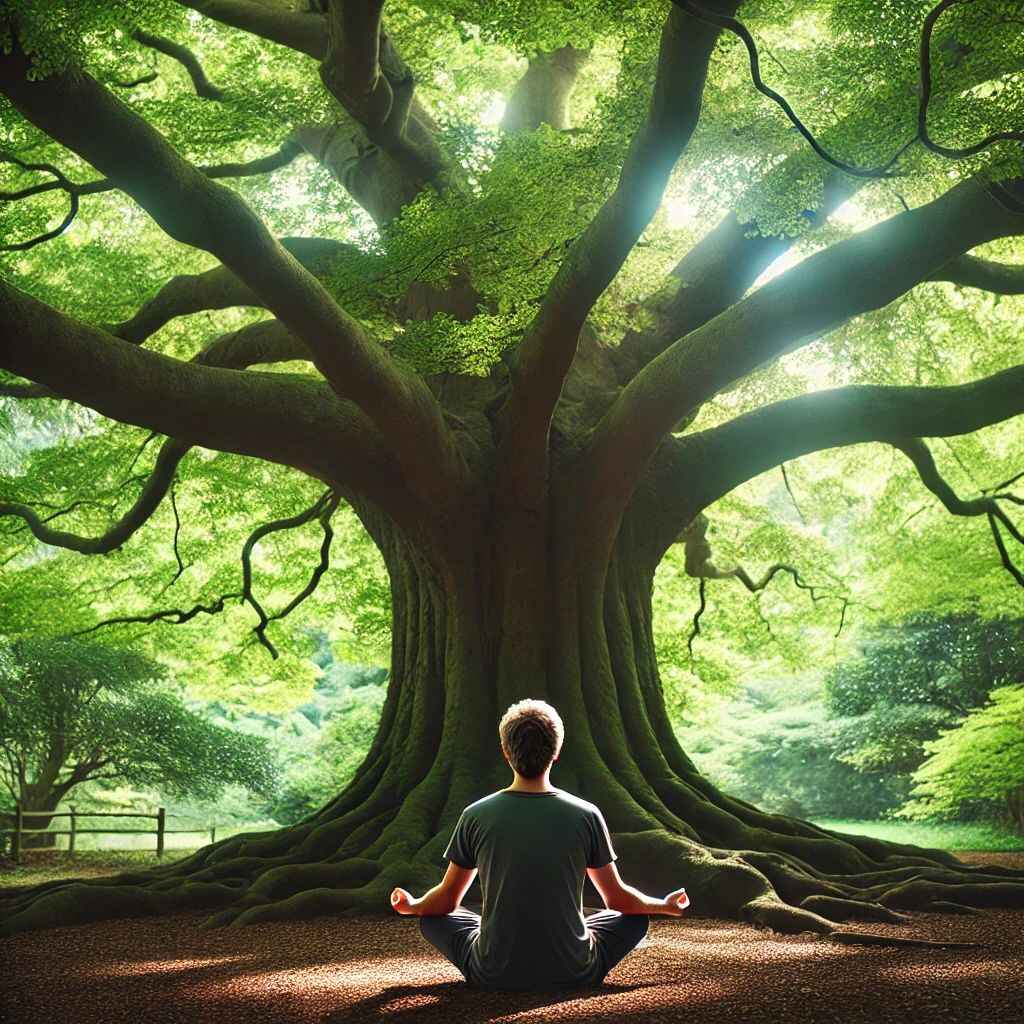In today’s modern lifestyle, it’s easy to lose touch with the natural world and the steadying energy it offers. Grounding, also known as earthing, is a powerful way to restore that lost connection, aligning our body with the earth’s energy to foster balance and promote overall well-being – physically, emotionally, and spiritually.
Whether you’re just discovering grounding or have incorporated it into your routine for some time, there are always new methods to explore and ways to deepen your connection to nature. In this guide, we’ll walk through grounding techniques suited for both beginners and seasoned practitioners, with actionable steps you can start using right away. Let’s reconnect with nature and harness the energy that surrounds us.
What is Grounding?
Grounding is the process of connecting with the earth’s energy by physically touching the ground or engaging with natural elements. It’s believed that by grounding, you can absorb the earth’s electrons, which help to balance your body’s energy field. This connection is said to have many benefits, from reducing stress and inflammation to improving sleep and emotional balance.
Key Takeaway:
Grounding allows you to connect with the earth’s natural energy, helping to balance your physical and emotional well-being.
Grounding for Beginners: Simple Ways to Get Started
If you’re new to grounding, it’s important to start with simple, approachable techniques that don’t require specialized tools or complex rituals. The beauty of it is that it can be practiced anytime, anywhere.
1. Walking Barefoot Outdoors
One of the simplest ways to ground yourself is by walking barefoot on natural surfaces like grass, dirt, or sand. The soles of your feet are packed with nerve endings, making them perfect for absorbing the earth’s energy. Aim to spend at least 20 minutes walking barefoot in a park, your backyard, or along the beach.
How to Do It:
- Remove your shoes and socks, and walk slowly, focusing on the sensations in your feet.
- Breathe deeply and try to connect with the earth beneath you.
Benefits:
- Improves blood circulation.
- Reduces stress and anxiety.
- Enhances mood and mental clarity.
2. Sit Under a Tree

Nature has an incredible calming effect, and sitting under a tree can be one of the most peaceful grounding experiences. Trees are deeply rooted in the earth, symbolizing stability and strength. You can absorb this energy simply by sitting with your back against a tree, feeling its grounding power.
How to Do It:
- Find a quiet tree in a park or your backyard.
- Sit with your back against the trunk, close your eyes, and breathe deeply.
- Visualize the roots of the tree grounding you to the earth.
Key Takeaway for Beginners:
Start small by walking barefoot or sitting under a tree. These techniques are simple yet powerful in re-establishing your connection to nature.
Grounding for Advanced Practitioners: Taking it to the Next Level
If you’re already familiar with basic grounding techniques, you can deepen your practice by incorporating more advanced techniques that strengthen your connection to the earth.
3. Grounding Meditation with Nature Elements

Meditation is an excellent way to enhance your grounding practice. Instead of simply sitting or walking, incorporate natural elements like water, stones (“Choosing your first Crystal“), or soil into your meditation to create a deeper, more immersive experience.
How to Do It:
- Sit in a comfortable position outdoors.
- Hold a crystal or stone in your hand (choose grounding stones like black tourmaline or hematite).
- Close your eyes and focus on your breathing.
- Visualize roots extending from your body into the earth, anchoring you.
For an extra layer of grounding, practice this near a body of water, such as a river or lake, and listen to the natural sounds as you meditate.
4. Earthing with Water
Water is a powerful conductor of energy, making it an ideal element for grounding. You can combine it with a simple water-based practice like wading in a natural body of water, such as a lake or stream, or even submerging your hands in a bowl of water filled with sea salt.
How to Do It:
- Find a clean stream, river, or ocean to stand or wade in.
- Stand barefoot in the water, focusing on the cool sensation on your skin.
- Visualize the water washing away any negative energy and grounding you to the earth.
If you can’t get to a natural body of water, a bath with sea salt is a great alternative. Simply dissolve the salt in warm water and soak your feet or body, visualizing the earth’s energy flowing through you.
Key Takeaway for Advanced Practitioners:
Take your grounding to the next level by incorporating meditation with nature elements or engaging in water-based grounding practices for a more immersive experience.
The Science Behind Grounding: Why It Works
While grounding has been practiced for centuries, modern science has begun to explore its potential benefits. Researchers believe grounding works by allowing your body to absorb negatively charged electrons from the earth, which may help reduce inflammation, neutralize free radicals, and improve overall health.
A study published in the Journal of Environmental and Public Health supports the idea that grounding can reduce pain and stress by promoting a positive shift in electrical energy in the body. This scientific basis adds weight to the many anecdotal claims of grounding’s ability to promote physical and emotional healing.
Read More: Scientific Benefits of Grounding
Key Takeaway:
Grounding not only feels good but has scientific support for its potential to reduce stress, inflammation, and improve well-being.
Practical Grounding Techniques You Can Do Every Day
Grounding doesn’t have to be a special event. There are several ways to incorporate grounding into your daily routine, even if you live in an urban environment or have limited access to nature.
5. Grounding with Houseplants

If you can’t get outdoors, bring nature inside! Caring for houseplants allows you to connect with natural elements on a daily basis. Spend time watering, pruning, or simply touching the leaves of your plants to absorb their energy.
How to Do It:
- Place your hands in the soil of your houseplants and breathe deeply.
- Feel the texture of the soil and allow yourself to be present in the moment.
6. Visual Grounding Exercises
If you find yourself indoors or without access to nature, you can still ground yourself through visualization techniques. Picture yourself standing barefoot on grass, feeling the earth beneath your feet. Imagine the sounds, smells, and sensations of nature to calm your mind and center your energy.
How to Do It:
- Sit in a quiet place, close your eyes, and visualize yourself surrounded by nature.
- Focus on the details, such as the breeze, the sound of birds, and the feel of the earth under your feet.
Key Takeaway:
Grounding can be part of your daily life, whether through caring for houseplants or using visualization techniques when you can’t get outdoors.
Common Mistakes to Avoid
While grounding is a simple practice, there are a few mistakes that beginners and even experienced practitioners might make.
- Forgetting to Breathe: Breathing deeply helps enhance the grounding experience by allowing you to fully relax and absorb the earth’s energy. Don’t rush the process; take time to breathe and focus.
- Overcomplicating the Practice: Grounding is meant to be simple and accessible. You don’t need complex tools or rituals—nature is enough. Avoid overloading your practice with too many elements, especially if you’re just starting out.
- Neglecting Consistency: Like any form of self-care, grounding is most effective when practiced regularly. Make time in your daily or weekly routine to reconnect with nature.
Conclusion: Reconnect and Recharge
Grounding techniques are an easy and effective way to reconnect with nature, calm your mind, and restore balance to your body. Whether you’re a beginner just starting out or an advanced practitioner seeking to deepen your practice, these techniques offer valuable tools to improve your well-being.
Next time you’re feeling stressed or disconnected, remember to take a moment to ground yourself—whether it’s walking barefoot, meditating with crystals, or simply visualizing a connection to the earth.
Recommended Reading: Starting Your Holistic and Metaphysical Journey: Tips for Beginners
Key Takeaway:
Grounding is for everyone, and with just a few minutes of practice, you can reconnect with the earth’s energy, bringing peace and balance to your life.
By including these techniques in your daily routine, you’ll build a stronger, more meaningful connection with nature and yourself. Feel free to experiment with different methods and find the ones that resonate with you!
Explore more crystal care tips and shop our collection at MysticMineralsMarket.com!










